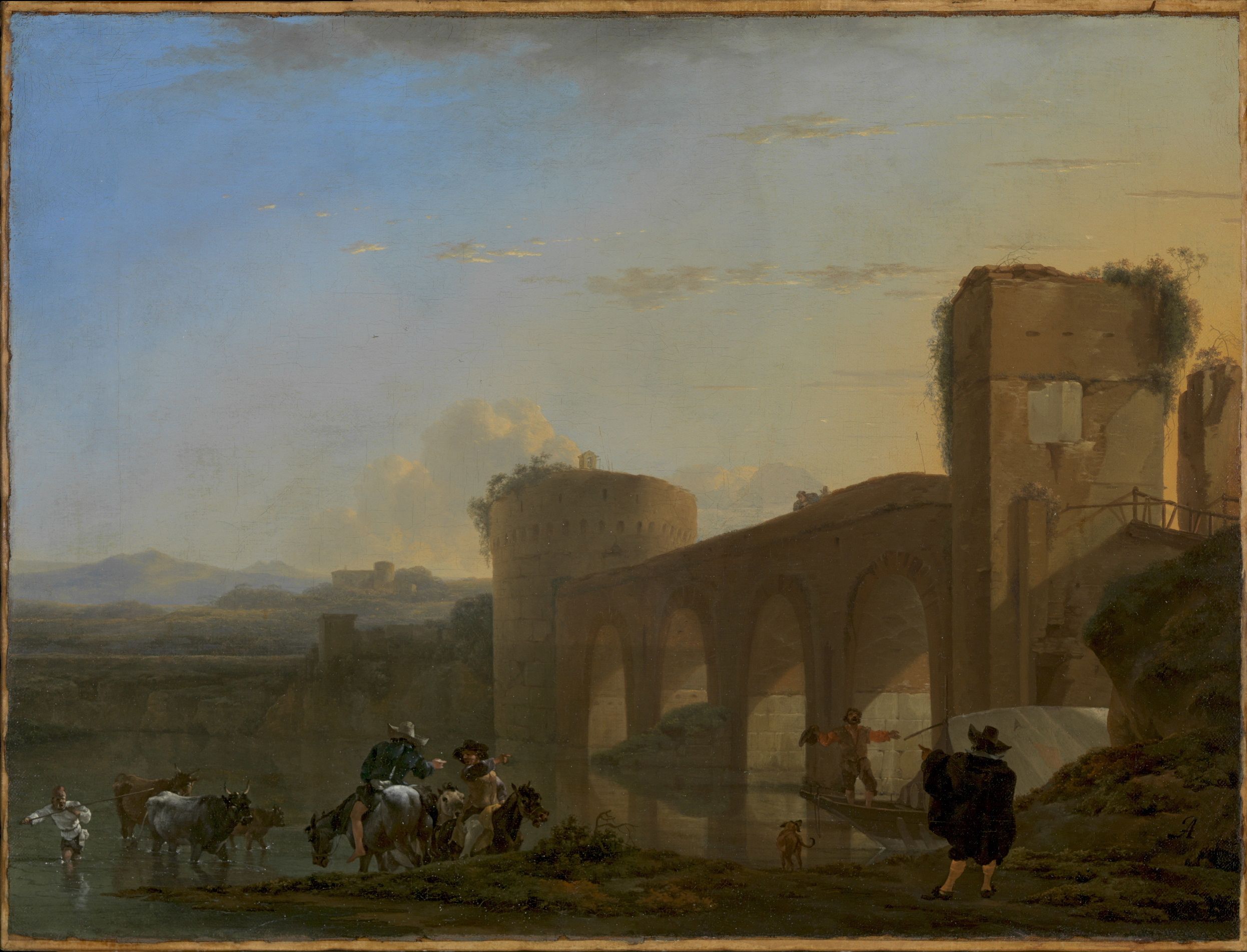
‘Dutch Italianate painting’ has never been the most popular strand in seventeenth-century landscape art. Cornelis Hofstede de Groot (1863-1930), who was the first to make a systematic description of seventeenth-century Dutch painting, thought it did not really merit the label ‘Dutch’. To his mind, Dutch art should be about Holland: wide, soggy landscapes under heavy skies, towns with ornamental gables. No, those Italianate artists did nothing for him. Their paintings were contrived.
Thanks to the efforts of people like Albert Blankert – who in 1965 organised a pioneering exhibition on Italinanate painting in Utrecht – Hofstede de Groot’s opinions have been revised and the Italianate painters now hold a place in the so-called canon. Jan Asselijn, who was nicknamed ‘Crabbetje’ (little crab) and lived in Rome from 1635 to 1644, was one of the foremost representatives of Dutch Italianate painting. He left behind a small but important oeuvre influencing, for example, the prolific Italianate painter from Haarlem, Nicolaes Berchem.
In the spring of 2010, I was asked to give advice about a beautiful example of Asselijn’s work. The painting, which was part of an inheritance, had never been seen in the flesh by Charlotte Steland-Stief, author of the catalogue raisonné of Asselijn’s work. During the 2010 Amsterdam symposium of the Historians of Netherlandish Art, I invited her to come and have a look at it. She accepted my invitation and confirmed my view that the landscape had probably been painted around 1648, by when the artist was back in Amsterdam. She also pointed out that this is the earliest painting by Asselijn in which we see a view of a distant landscape. Prior to this he was mainly interested in motifs that allowed him to stress effects of chiaroscuro, for example caves. But here we are suddenly presented with the overwhelming brightness of the Roman Campagna, with the entire landscape bathed in the light of the low sun.

However, when the painting was restored, it became evident – as the images demonstrate – that everything we had seen so far was actually the product of a manipulation. At some point during the nineteenth century someone must have decided that the painting should be imbued with a warm tone so that it would match our northern interpretation of Italian light. The painting was given a tinted varnish to make it more ‘romantic’, although, as we now know, Asselijn intended the light to be considerably cooler. Dutch fantasies about ‘Italianate’ light made this treatment fashionable at the time. It was fascinating to see a completely different painting emerge – one that was in many ways more beautiful.
Next we had to tackle the question of provenance. In her catalogue, Charlotte Steland-Stief had suggested that the painting could be traced back to the collection of Willem Lormier (1682-1758), but this had not been confirmed by further research. Lormier was a ‘solliciteur militair’ from The Hague, a banker of sorts who looked after the capital of private clients and used his investments to finance armies as required when war broke out. He also collected and traded in paintings.
In 1752 Lormier published a catalogue of the 376 paintings that were in his possession at the time. Two copies of this catalogue, annotated by Lormier himself, are kept in the archives of the Netherlands Institute for Art History (RKD). With the help of these catalogues, Everhard Korthals Altes has tried to reconstruct Lormier’s collection (Simiolus 2000/2001). Korthals Altes’s reconstruction unfortunately makes no mention of the Asselijn, but when asked about it, he confirmed that the painting could well be no. 64 ‘Castelle, brugge, beelden etc.’ (castles, bridges, figures etc.), which has almost exactly the same measurements.
Lormier probably sold the painting to the Leipzig collector Winkler, who in turn sold it with the rest of his collection at an auction in 1798. We then lose sight of the painting for over a century until it turns up again in 1904 with Frederik Muller in Amsterdam, from whom it was bought by the great-grandfather of the family that contacted me.
The above story shows how much work has to be done when a painting resurfaces after a lengthy period of family ownership. Its condition, place within the artist’s oeuvre, provenance history; all of these aspects need to be checked and carefully considered so that the full story can be presented to the market. And the market loves such stories.
